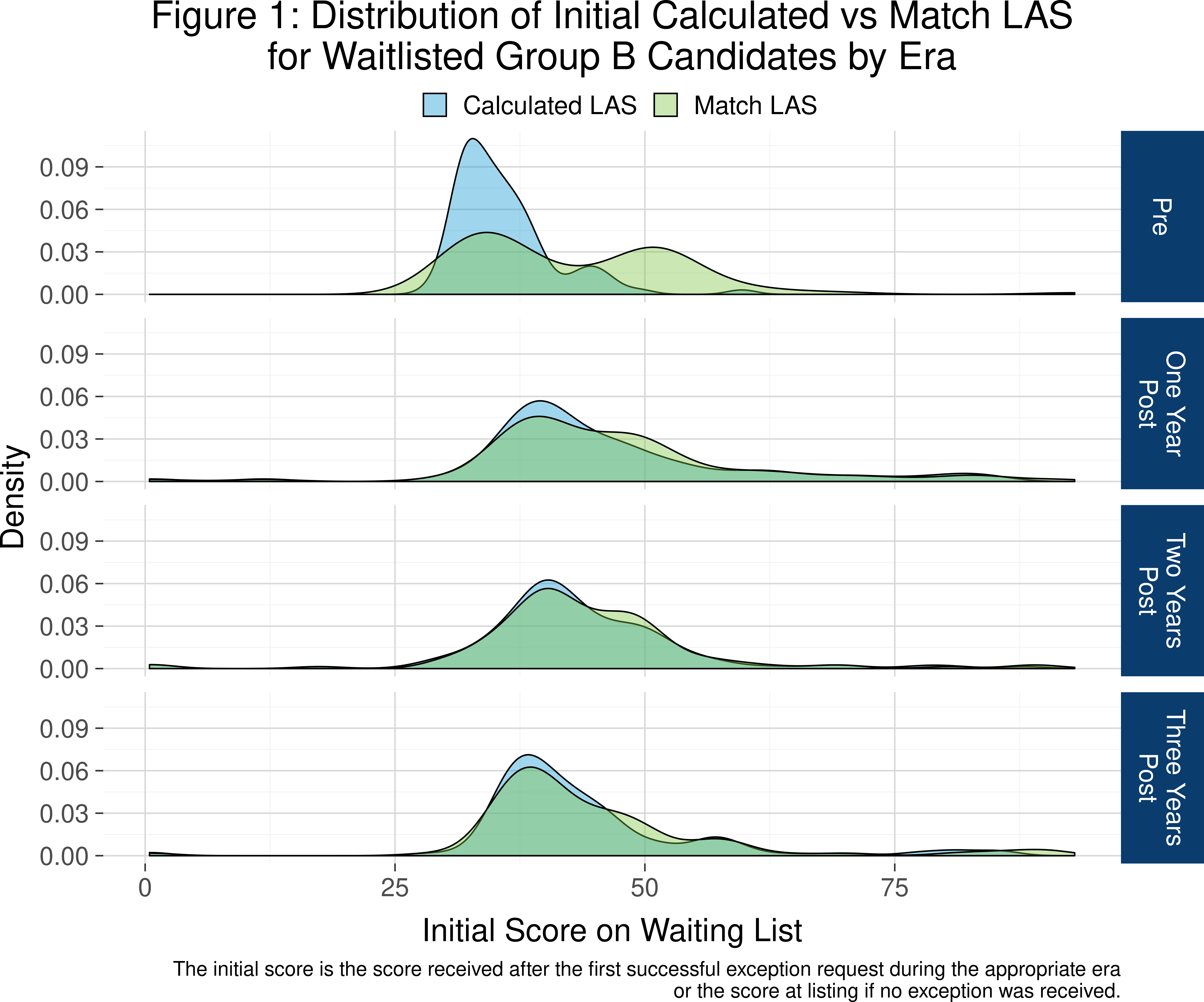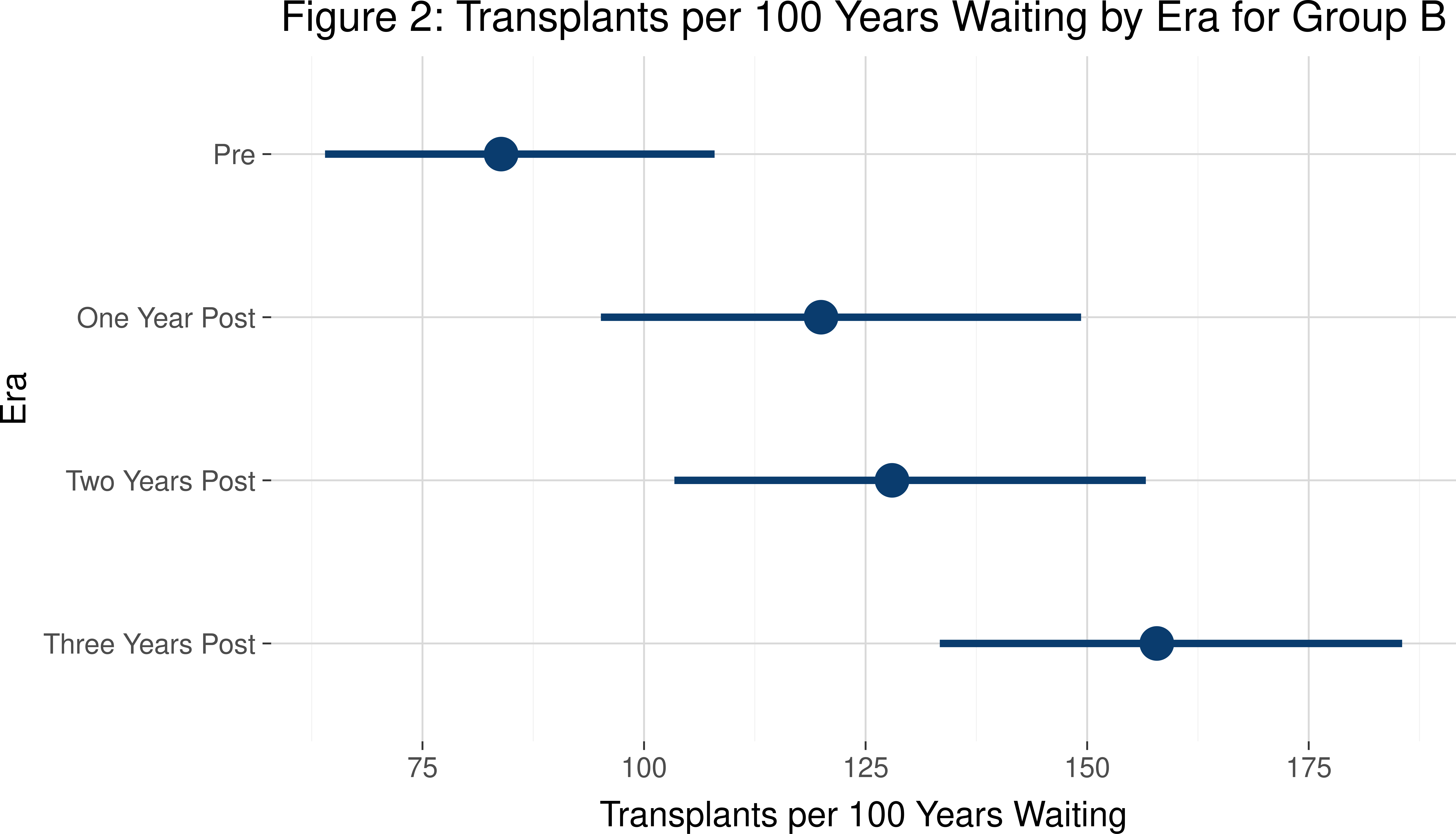Impact of the 2015 LAS Revisions on Lung Candidates with Pulmonary Vascular Disease
1UNOS, Richmond, VA, 2University of Michigan, Ann Arbor, MI
Meeting: 2020 American Transplant Congress
Abstract number: B-282
Keywords: Allocation, Lung, Lung transplantation, Public policy
Session Information
Session Name: Poster Session B: Lung: All Topics
Session Type: Poster Session
Date: Saturday, May 30, 2020
Session Time: 3:15pm-4:00pm
 Presentation Time: 3:30pm-4:00pm
Presentation Time: 3:30pm-4:00pm
Location: Virtual
*Purpose: On February 19, 2015 a major revision to the Lung Allocation Score (LAS) was implemented with the goal of more accurately reflecting waitlist urgency and post-transplant survival, especially for candidates with pulmonary vascular disease (group B). This study evaluates the effects of these revisions in improving access to transplant for group B candidates and reducing the administrative burden associated with exception requests for a higher LAS.
*Methods: We used OPTN data to analyze differences in calculated and match LAS and exception requests submitted for 10,854 adult lung registrations added between 2/19/14 and 2/18/18 and transplant rates for 888 adult lung-alone candidates ever waiting between 1/1/14 and 6/30/18. These data were split into four cohorts, one pre-implementation and three post-implementation, each spanning one year.
*Results: The difference between median initial calculated LAS (no exceptions) and median match LAS (includes exceptions) decreased from 4.64 in the pre cohort to 0.53 in the three years post cohort (Fig 1). The number of score exception requests submitted for group B declined from 70 pre-implementation to 25 one year post-implementation, then rose to 29 and 45 in subsequent eras. The transplant rate for group B candidates was significantly higher than pre-implementation in every post era (one year post vs pre: relative risk of transplant = 1.43, 95% CI 1.02-2.00; two years post vs pre: rr = 1.53, 95% CI 1.10-2.11; three years post vs pre: rr = 1.88, 95% CI 1.39-2.54) (Fig 2).
*Conclusions: The decrease in the difference between initial calculated and match LAS after the 2015 update suggests that the LAS now more accurately reflects group B candidates’ medical urgency, and transplant rates increased for group B after the revision. The new LAS has increased group B’s access to transplant and reduced members’ administrative burden by decreasing the number of exception requests submitted for this diagnosis group.
To cite this abstract in AMA style:
Lindblad K, Goff R, Chan K. Impact of the 2015 LAS Revisions on Lung Candidates with Pulmonary Vascular Disease [abstract]. Am J Transplant. 2020; 20 (suppl 3). https://atcmeetingabstracts.com/abstract/impact-of-the-2015-las-revisions-on-lung-candidates-with-pulmonary-vascular-disease/. Accessed December 20, 2025.« Back to 2020 American Transplant Congress


